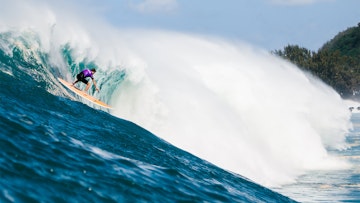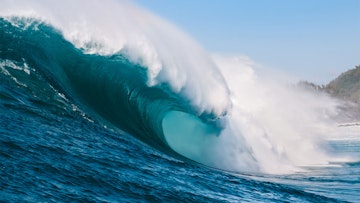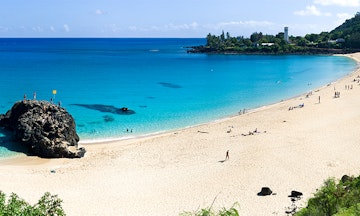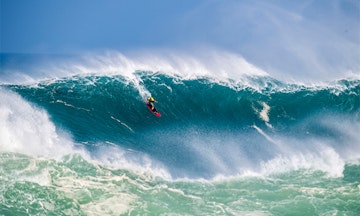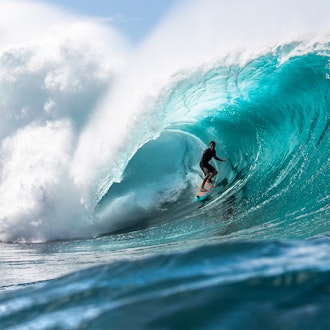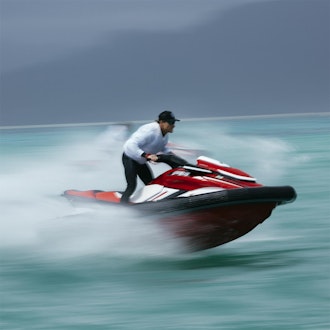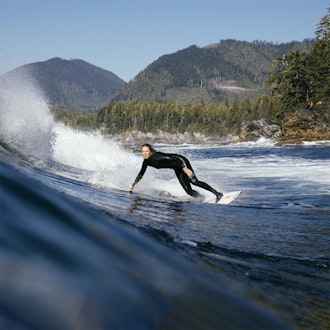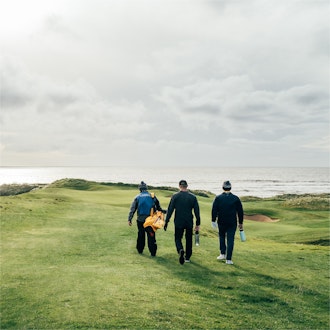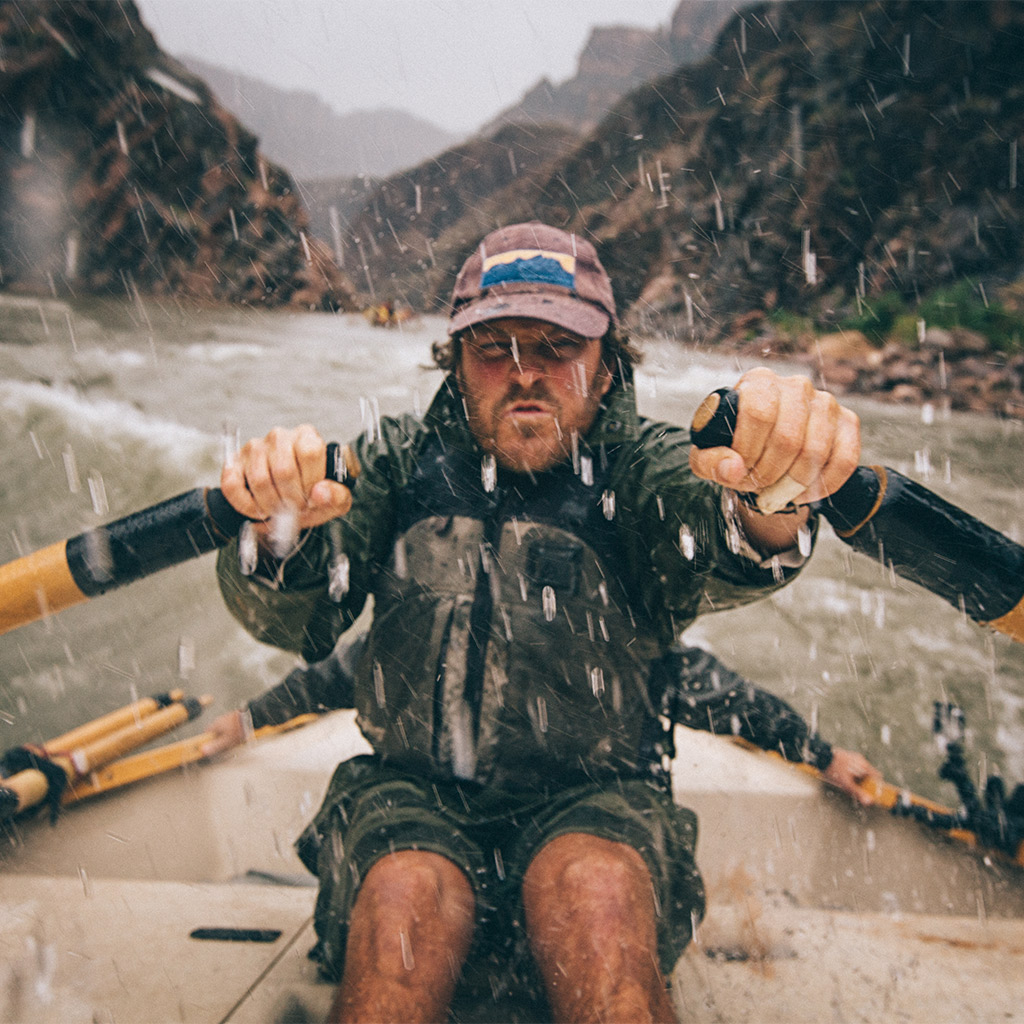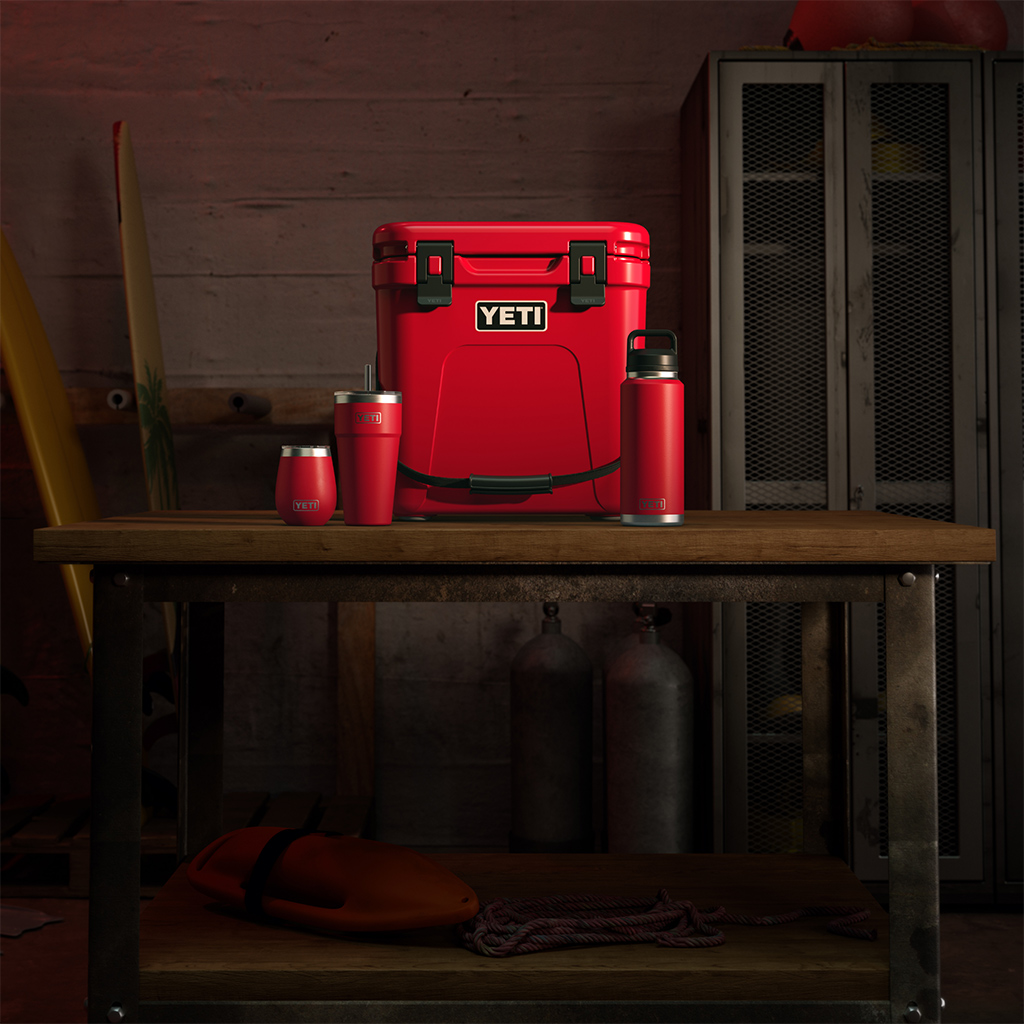Big wave surfing was born in the same place as surfing itself: Hawaii. On the island of Oahu, the southern shores are great for surfing relaxed and reliable sets. The violent west and north shores are a different story, seeing the biggest waves due to the way they’re positioned in the ocean. It is here, on Waimea Bay, where waves up to 50 feet rock the coastline and tempt the most daring to the water.
MAKING A MONSTER
Big waves are natural events that only happen when conditions align perfectly. Even in renowned spots like Waimea Bay, they’re not a given. The bay’s Eddie Aikau Big Wave Invitational is only hosted when waves consistently reach a minimum of 20 feet on the “Hawaiian scale”, which translates to 30+ feet wave faces upon surf break. 2023 was the first time in seven years that conditions were perfect and the swells were finally big enough. That kind of heavy water doesn’t just appear out of nowhere.
Winds need to be strong, consistent, and side or offshore. Large, winter storms work as great catalysts. And as sets travel unobstructed over whole oceans, they exponentially gain in size and power. As it’s forming thousands of miles off-shore, the majority of a wave, just like in an iceberg, is underwater. It then takes some topographical luck to push a powerful wall of water like this to the surface — to form a big wave.
The biggest waves in the Pacific can be found on the north shore of Maui, at the infamous Jaws surf break, thanks to shallow reefs that force incoming sets into something surfable. Waimea Bay on Oahu’s north shore hits both geographical and topographical requirements as well: it experiences swells produced by winter storms in the northern Pacific Ocean and the contour of the bay’s floor juts up abruptly. Because Oahu is thousands of miles from continental lands in the middle of the Pacific, these monster waves have ages to build offshore. So when they eventually roll into the bay and against its floor, it’s like hitting a brick wall. They are driven up violently in the shallow waters and cause the 30+ footers that Waimea has become so famed for.
The Most Wonderful
Time of the Year
If you’re not looking for surf, July is the paradise that every visitor expects. The tide is lazy and the horizon flat. Beach goers can swim out with very little effort.
But come December, it’s a completely different story. Crashing 30+ footers, ripping currents, ever changing conditions, and sneaker waves make the beach a dangerous place. Paying attention to beach signage can be the difference between life and death, and the rule of thumb is to never turn your back to the water. Tourists have had their shoes, lunch, chairs, or even their whole body dragged out to sea by an unexpected wave. Even small, seemingly harmless ankle-rollers can knock someone off their feet: the remnants of the full wave’s power linger and the sand underfoot pulls out from underneath. Even on the calmest days, things can quickly go sideways, so its best to never put your trust in a lazy looking horizon.
Bring Out the Big Guns
Smaller, nimbler boards are no match for the raw power of a 30 footer — surfing big waves requires something longer and much thicker. The larger surface area of big wave guns allows chargers to paddle out easier and maneuver to the best part of the wave. On average, they usually fall between 8’0” to 10’6” in length with a minimum thickness of about 3 inches. These measurements all depend on the weight, height, and preference of the rider, as well as the conditions of the day. Here are a few of our Ambassadors’ tried and true big wave guns.
